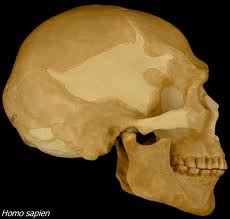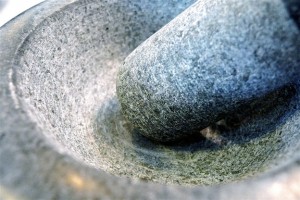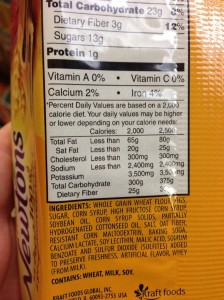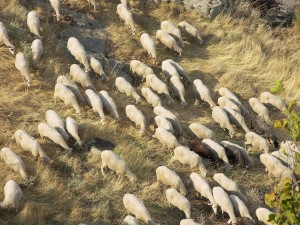The Paleolithic diet presumes that foods eaten during the stone-age (Paleolithic era from 2.5 million years ago to 10 thousand years ago) are optimal foods for humans. The Paleolithic (Paleo) diet includes grass fed beef and other lean meats, fish, shellfish, fruits, vegetables, eggs, nuts, but no grains, no dairy, no salt, no refined fats (butter or margarine) and no sugar or high fructose corn syrup.
Fanatical Diet (Lifestyle types)
There are three things one should never discuss in polite company, religion, politics, and diet. Getting into an argument with proponents of diets is like a democrat trying to convince a republican that Obama is ok. Each side will quote their own studies, statistics, and population studies. But the key to scientific study of the various diets is not what we presume from correlation, but from what we learn when that diet is placed into patients – in this case, the laboratory values of those who have the diet.
Diet proponents become fanatical about their diet (lifestyle) to the point of religious fervor. Seeking to prove that their diet is backed by science, proponents use population studies with associations that are only suggestive and not proof of causation. These associations become propaganda as the associations are repeated over and over, morphing from a suggestion to “proof.”
The Flaws of population studies or Correlation does not equal causation
The foundation of many diets are based on the correlation of what a population eats and what diseases they suffer from. In the Paleo diet the assumption about what cavemen ate and the diseases cavement suffered from is a spurious correlation at best, and far from causation.
Population studies are flawed, as often we find that we don’t know as much about the population as the data might suggest. Take the Pima Indians of the Southwest. In 1990 a paper came out stating that the Pima Indians had a low incidence of fatal coronary heart attacks in spite of having the world’s highest rate of diabetes. The Pima Indians were called among the most studied population, with an NIH post in Phoenix, clinics in the reservation, it seemed like you couldn’t get healthcare if you were a Pima without running into a NIH epidemiologist, physician, or have some blood sampled by them. The Strong Heart Study was begun to find out why the Pima Indians didn’t have heart disease, in spite of the highest rate of diabetes in the world. When the population was examined more carefully, the Pima Indians had plenty of heart disease.
Step back from the most studied group in the United States with great statistics and physicians trained in modern medicine and then imagine making conclusions about what Chinese eat, or Mediterranean’s, or French. Those assumptions are more flawed, as are the statements about what diseases they do or do not have. The Chinese, for example, with The China Project by T. Collin Campbell, made assumptions about mortality in the rural areas of China that were incorrect, because they were under diagnosed. Now step back further trying to determine what people of the Stone Age ate, what diseases they had, and we leave the tenuous role of suggestion and enter the role of outright guessing. Even if we have reasonable data (and often we don’t) the correlation between what people eat as a cause for what diseases they have is a fundamental flaw. Correlation does not equal causation.
The Best Diet or Lifestyle is?
When it comes to the best diet plan for a person – we just don’t know enough to say that one is better than another. There isn’t enough evidence to state that the Paleolithic (also called Paleo) diet is better than the Ornish, Southbeach, Pritiken, or pick one, or better than how you currently live your life.
We cannot broadly say that any given diet will prevent heart disease, cancer, arthritis, or even obesity. When someone tells you a diet can prevent such, they have gone from the realm of science to the realm of bs.
The Paleo Diet Premise:
The Paleo diet premise is that we should avoid certain foods because our body is not evolved to process those foods, and if it does process them it will lead to the chronic diseases of modern man – heart disease, strokes, cancer. Cavemen didn’t have those diseases, so we should eat like cave men. Of course, we don’t know about what diseases that cavemen had – especially when it comes to organ and soft tissue diseases, we just have a few fossils that we examine and look for evidence of known diseases. Would coronary artery disease show up in a fossil – nope? Would cancer show up in the fossil – bone cancer would (kind of a rare cancer) or cancer that went to the bone might – but it would be hard to tell if the fossil evidence. Often Paleo-types point to skulls full of teeth, stating they just didn’t have dental issues like we do- well, if you have teeth your skull is more likely to be intact to become a fossil than if you don’t is the first basic point; second, some of those skulls came from areas rich in natural fluoride; and third, there is no doubt that cola, chewing gum, and candy contribute to cavities; fourth, did cavemen have a toothbrush (or would they call it a teeth brush).
We do know, from many hunter-gathering societies, that they live a short life, and not long enough to develop the diseases we associate with aging. All a person has to do to pass on their genes is make it into puberty, and to be effective to nurture the young, into the 30’s, and to see grandchildren and help child raising – into the early 40’s. That is what a simple civilization needs. After that, in any primitive society, the elderly become a burden – perhaps to be placed on an ice flow. People who live into their 40’s and 50’s may die of cancer, heart disease, or obesity- but they will have passed on their genetic code.
The Evolution of Homo Sapiens:
When Homo Erectus came out of Africa, they encountered a world that was much more varied in food sources than Africa. The brain of the human (H. sapiens) evolved, becoming much larger, and utilizing far more energy than the brains of the Australopithecus – about 10 percent more. More than any other species, humans evolved a brain that required more calories- and our brain metabolism accounts for up to 25% of our energy needs. Bigger brains and its increased requirements mean a richer diet- and modern hunter gathering species derive about half of the energy from animal foods – in contrast with other primates that have far fewer animal foods. While our ancestors the Australopithecus dined on plant foods, and had large mouths to grind up fibrous plants – humans are built, with smaller faces and jaws, to dine on energy rich animal foods.

The reconstructed skull of Lucy, Australopithecus- large jar and muscles for eating plants

The Human skull is larger, larger brain- and jaws for more energy rich foods
Humans were successful, as the fossil record shows, because they were “flexible” eaters, using a wide variety of dietary strategies. If there were a lot of Elk, then we ate elk- berries, we picked berries. To state that our digestive system evolved only to eat some few items found in the Stone Age – has been disproven on the face of it. Our ancestors in Africa didn’t encounter Arctic char, whales, seals, salmon – and yet when they moved from that warm climate to the frozen north, they adapted quite well to a very high fat diet of primarily animal based diet that was clearly not available in Africa. The findings of starch grains from wild plants in grinding tools from sites in Italy, Russia, and the Czech Republic from the mid-upper Paleolithic era suggest that the production of flour was present 30,000 years ago.

Contrary to what Paleo proponents state: people made flour 30,000 years ago
How to eat like a caveman
There are some things about the Paleo diet that people avoid:
Excess sugars including fructose
Excess Omega 6 oils – including soy
Processed wheat, grains, and gluten
Dairy
What is the scientific evidence for this? It’s the simple premise that modern man has lifestyle illness from altering food, taking in too many calories, and if we would return to our ancestors roots (pun intended) we would avoid these highly processed foods and not suffer from the holy trinity of diabetes, obesity, heart disease, and maybe even cancer. There is not a single shred of evidence to support the premise of this diet.
An entire dietary regimen has been formed with plenty of books and websites to guide you through this. It has become so popular that the question becomes not the flawed premise for the diet, but rather how the diet would compare to other diets. If you want to eat like a caveman, then shop on the outside of your grocery store. Everything on the inside of your grocery store is generally processed foods, and everything on the periphery of the grocery store is generally not processed. On the periphery you will find the vegetables, fruits, meat counter, fish counter – although you might get in trouble with dairy, and before you check out they might have a cookie or two – or there might be a bakery (a big no no among the non-Geico types). But lets be clear- whatever the caveman could get that they could eat- they would eat, and if a caveman were to be around today- wait, we have them – well, they eat Poptarts.
In one real scientific study patients with known heart disease who were randomized to either the Mediterranean-like diet (based on whole grains, low fat dairy products, fish, fruit, and vegetables) or the Paleolithic diet (no grains or dairy but plenty of lean meat, fish, fruits, vegetables, root vegetables, eggs, and nuts) and those who undertook the Paleolithic diet were satisfied with less food. There was also a decrease in leptin in the Paleolithic group by 31% and by 18% in the Mediterranean group.
There have been other studies that show that people who go with this diet have improved laboratory values – less triglycerides, lower blood pressure, some weight loss, that the diet has a better glycemic index (the food doesn’t increase blood glucose levels as much). This diet compared to a standard diabetic diet did better. Those studies are short term, with small numbers of individuals, and hints of laboratory values.
So before one assumes I am putting this diet plan into the trash bit along with Ornish- there is clearly some data here that shows good nutritional sense in the food.
While highly processed carbohydrates transiently increases blood glucose levels more than whole grains – it does not mean that bread is bad for a person. At least we don’t know enough about this to state that today. Clearly, people who eat a lot of flour based products can get fat quickly, and getting off the bread and bakery products will help reduce weight, decrease hemoglobin A1C levels, decrease triglycerides, and overall be healthy. Some people need to be told to never eat them again – as some alcoholics must never drink again- and some people are able to moderate them so they do minimal damage to the body.
Only a few studies have examined the effects of the Paleolithic diet on laboratory values that we associate as increased risk for disease – but again, those were laboratory values, not a long-term follow up for disease.
The premise for the Paleo diet may be flawed, but here are the parts of the Paleo diet that most would agree with:
(1) Highly processed grains – white flour, rolled oats- cause a rapid increase in blood glucose levels. Now this is not necessarily bad. Glucose is the building block for every living cell. It is essential for life. Where often we get in trouble is not with mild excess glucose, but when fructose is involved and causes a blunting of that response. Fructose more than glucose causes havoc with our bodies with 30% of fructose going to fat. But look at the Chinese- not terribly fat, and a lot of noodles – but as soon as we introduce High Fructose Corn Syrup- well, now they are getting heavy.

I use to think these were a healthy snack – turns out they are just a vehicle for fructose
(2) Fish – as long as it is not contaminated with mercury, is a protein source that is high in Omega 3 fatty acids, which have been shown to be beneficial. If you have some great fish three or four meals a week it works out well.

Fish eaters seem to live the longest
(3) Vegetables and fruits are the basis for most diets- thus a vegetarian could participate in a Paleo diet easily. Too many people do not eat enough fruits or vegetables or look to them as snacks. A Paleo Vegan would work out well, although they lose the benefit of not eating bacon.

(4) The trend away from cattle feedlots and desire to have grass fed rather than grain fed beef. Grain fed beef is fatter and more prone to being infected with Salmonella or E.Coli than grass fed beef. There is a wider variety of taste with grass fed beef, and most who find grass fed beef end up preferring its flavor. Grass fed beef is best cooked with Sous Vide cooking. Grass fed beef is better for the environment, has more Omega 3-fatty acids than Omega 6-fatty acids, and are raised under much better conditions.

Grass Fed beef has more flavor, and are best cooked Sous Vide
(5) If you eat more calories than you burn you will gain weight. But it is more than just calories – it is also the types of calories. Foods that are slowly burned predominate the Paleo diet. Thus, calorie for calorie with the Paleo diet plan you will tend to burn the fuel from the food as opposed to store it.
(6) If you eat a majority of your food with highly processed grains instead of whole grains you will have a faster rise in blood sugar. Some attribute this rise to increased obesity and an increased load on the pancreas. Others point to fructose to state that it is associated with High Fructose Corn Syrup (and more about that here).
Overall- this is not a bad diet program. Nothing in it would appear to cause nutrient deficiencies and there is some preliminary evidence that this diet keeps a person more satisfied with less food. It is a low-carbohydrate diet, and those diets, in comparison to other diets, tend to produce faster and longer weigh loss.
Is this the new diet for this year, or is this a fad that will fall away as other low-carbohydrate diets will? One thing for certain, confirmation bias rules this diet – it is hard to convince someone who is losing weight on this diet that it is bad. But here is the trick: most individuals who “become Paleo” have not lived with a healthy diet before this. Finally they begin to eat healthy, and see results. I follow a few paleolithic types on twitter – they will tweet every positive reference they can for this diet- with the verve of an evangelical preacher.
Here is the key: No diet works in the long-run. You have to change your lifestyle. The six points above are some simple things you can do that science agrees with. If it changes, we will keep you informed here.

The latest flock of sheep – is this the Paleo Diet?
The premise of the diet is wrong- but when you see people lose weight, and feel better – the diet itself cannot be ignored. Plus, they get to eat bacon (at least the non-vegan Paleo diet types).
Here are a few scientific references- I’m sure we will add more as time goes on.
Low incidence of fatal coronary heart disease in Pima Indians despite high prevalence of non-insulin-dependent diabetes. RG Nelson, ML Sievers, WC Knowler, BA Swinburn, DJ Pettitt, MF Saad, IM Liebow, BV Howard, and PH Bennett
Circulation. 1990;81:987-995
Food for Thought: Dietary change was a driving force in human evolution. Wm R Leonard. Scientific American. December 2002: 107-114.
A Paleolithic diet is more satiating per calorie than a Mediterranean-like diet in inviduals with ischemic heart disease. Jonsson, et. Al. Nutrition & Metabolism 2010, 7:85
Thirty thousand-year-old evidence of plant food processing. A Revedin, et al Proc. Nat. Acad. Sci, November 2010: 107:18815-18819
Processing of wild cereal grains in the Upper Palaeolithic revealed by starch grain analysis Dolores R. Piperno1,2,5, Ehud Weiss3,5, Irene Holst1 & Dani Nadel4 Nature 430, 670-673 (5 August 2004)
http://www.nbcnews.com/science/early-humans-iran-were-growing-wheat-12-000-years-ago-6C10536898
